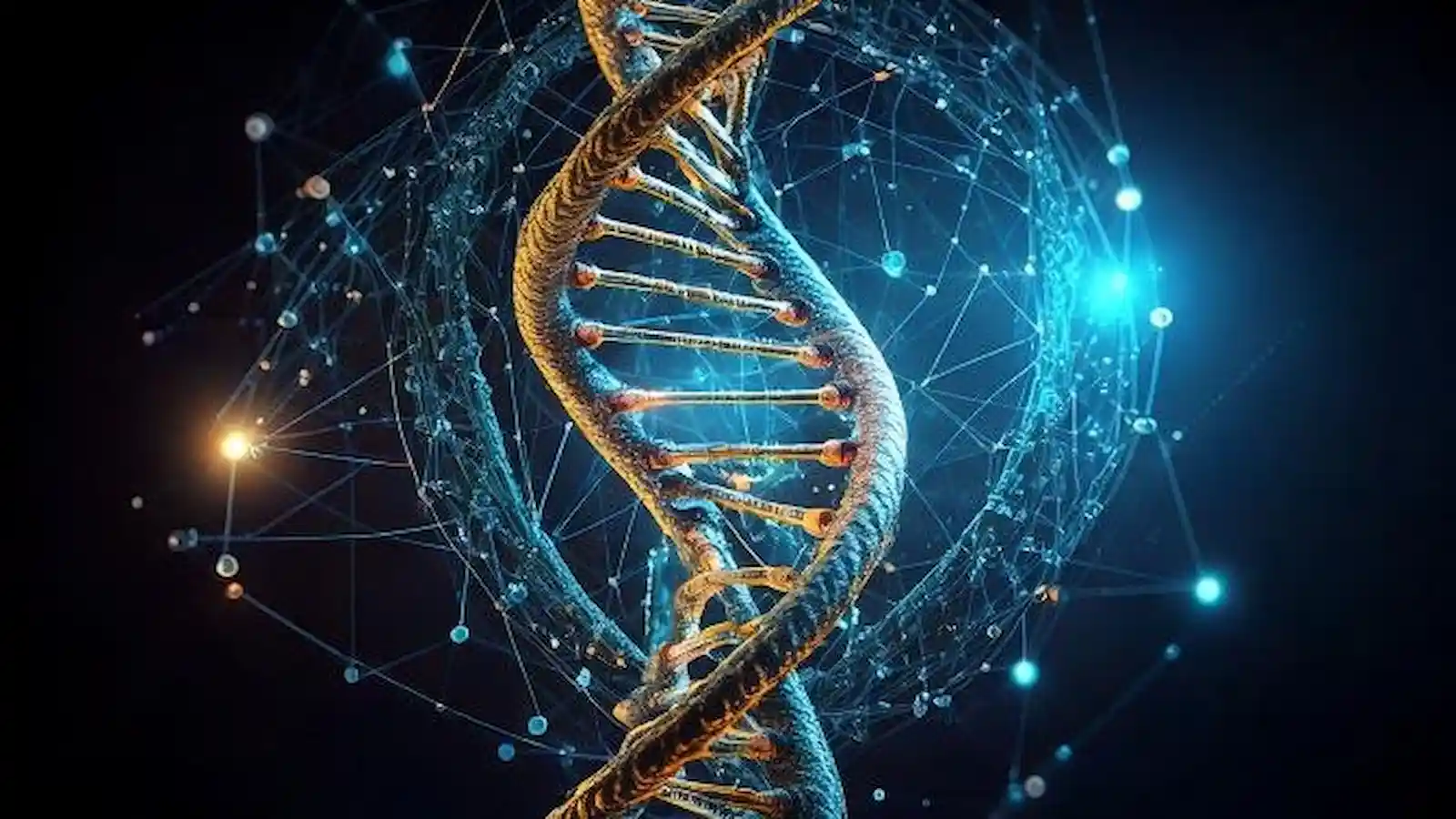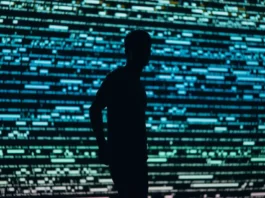Introduction
In a world where computers are shrinking in size yet expanding in power, a new revolution is quietly unfolding not in silicon, but in cells. Imagine a computer not made of chips and wires, but of DNA, proteins, or even living bacteria. This isn’t science fiction it’s biocomputing, a groundbreaking frontier at the intersection of biology and technology.

As we reach the physical limits of traditional computing, scientists and engineers are looking to nature for answers. Biological systems have evolved over billions of years to process information in ways far more efficient than anything humans have built. Biocomputing seeks to harness this natural intelligence, creating systems that compute not through binary code, but through biochemical reactions, genetic circuits, and molecular logic.
From medical diagnostics to environmental sensing, the potential applications are vast. But more than just offering new tools, biocomputing challenges how we think about computation itself. Could the computers of tomorrow be alive? This article dives deep into what biocomputing is, how biocomputers work, and why they could reshape the future of technology and life itself.
What is Biocomputing? Understanding Biological Computers
Biocomputing also known as biological computing or biological information processing is a multidisciplinary field that uses biological molecules and systems to perform computational tasks. Unlike traditional computers that rely on silicon chips and electronic circuits, biological computers use DNA, RNA, proteins, or even entire cells as the building blocks for processing information.
At its core, biocomputing is about mimicking or leveraging the natural information-processing abilities of biological systems. The human body, for example, performs trillions of operations every second responding to stimuli, repairing damage, and managing complex interactions all without a single microprocessor. This intricate biological “computation” inspires researchers to build new kinds of logic gates, circuits, and memory systems out of biomolecules.

One of the key differences is that biocomputing is inherently parallel and energy-efficient. A single test tube of DNA strands can perform billions of operations simultaneously something that would require massive supercomputing power in conventional terms.
By integrating principles from computer science, molecular biology, and engineering, biocomputing opens up new paradigms for how we store, manipulate, and transmit information.
National Human Genome Research Institute: What is Bioinformatics?
Key Concepts and Technologies in Biocomputing
Biocomputing isn’t a single technology it’s a family of approaches, each using different aspects of biology to process information. Below are three core domains that highlight its revolutionary potential.

DNA Computing: Applications and Mechanisms
DNA computing was first demonstrated in 1994 by Leonard Adleman, who used strands of DNA to solve a mathematical problem known as the Hamiltonian Path Problem. This experiment proved that DNA could store and process vast amounts of data through biochemical reactions.
DNA molecules are particularly suited for computation due to their ability to:
- Encode digital information using sequences of four bases (A, T, C, G)
- Interact through predictable binding rules
- Enable massive parallelism in small volumes
Protein-Based Computing: Molecular Computing Examples
Proteins are the workhorses of the cell, capable of folding into intricate shapes, performing chemical reactions, and acting as molecular machines. In biocomputing, proteins can serve as:
- Biological transistors
- Logic gates
- Memory units
By designing synthetic proteins that change shape or function in response to environmental stimuli (like pH, light, or chemicals), scientists can build programmable systems for biosensors, diagnostics, and smart therapeutics.
Cellular Computing Explained: Programming Living Cells
The most futuristic approach involves programming entire living cells. Using tools from synthetic biology, researchers can insert custom genetic circuits into bacteria, yeast, or human cells. These circuits can:
- Detect specific signals
- Perform logic functions
- Trigger responses such as protein production or drug release
For example, a bacterium could be engineered to detect heavy metals in water and emit a fluorescent signal essentially a biological “if-this-then-that” program.
NIH: Biocomputing: From synthetic biology to bacterial decision-making
Applications of Biocomputing: Real-World Uses
Though still in development, biocomputing is already being tested in a variety of impactful applications.

Smart Drug Delivery
Biocomputers can operate inside the human body to detect disease markers and release medication only when needed. For instance, a DNA-based nanomachine could identify cancerous cells and deliver chemotherapy with precision minimizing side effects.
Biosensing and Diagnostics
Engineered cells or proteins can act as highly sensitive detectors for pathogens, toxins, or biomarkers offering cheaper and faster diagnostics for medical, environmental, and food safety purposes.
Data Storage
DNA can store astounding amounts of data in a small space. One gram of DNA can theoretically store up to 215 petabytes (215 million gigabytes) of information. Tech giants and academic institutions are already exploring this as a next-gen storage medium.
Environmental Monitoring
Biological systems can be designed to detect pollutants, changes in pH, or radiation serving as autonomous ecological sensors that can adapt, self-replicate, and operate without power grids.
Neuromorphic Systems
Inspired by the human brain, neuromorphic biocomputing uses networks of molecules or cells to emulate neural behavior. These systems may one day lead to self-learning bio-AI platforms with unprecedented adaptability.
Organoid intelligence (OI): the new frontier in biocomputing and intelligence-in-a-dish
Ethical and Philosophical Implications of Biocomputing
As biocomputing blends the boundaries between living systems and machines, it raises profound ethical and philosophical questions. When computers are made from living cells, or decisions are processed by engineered organisms, where do we draw the line between tool and lifeform? Should a living biocomputer have rights? Who is responsible if a bioengineered organism causes unintended harm?

These questions are not theoretical. The ability to program cells to make decisions could one day extend to areas like behavior modification, neural enhancement, or even synthetic consciousness. This opens discussions around bioethics, consent, and control. How do we ensure such powerful tools are used for good and not for surveillance, manipulation, or warfare?
There’s also the philosophical tension between natural and artificial intelligence. If a biocomputer evolves or adapts over time, does it “learn”? Could it one day “understand”? Such questions challenge our definitions of intelligence, sentience, and even soul.
As we move forward, it’s crucial that innovation in biocomputing is guided by robust ethical frameworks, interdisciplinary dialogue, and a deep respect for life natural or engineered.
Challenges and Limitations of Biocomputing
Despite its promise, biocomputing faces important challenges:
Speed and Scalability
Biochemical reactions are slower than electronic ones. While they offer massive parallelism, each individual operation can take minutes or hours, limiting real-time applications.
Stability and Reliability
Biological components are fragile and variable. DNA strands degrade, proteins misfold, and cellular behavior can be unpredictable. Ensuring reliable performance is a major hurdle.
Cost and Accessibility
Engineering DNA, proteins, or cells is still expensive and time-consuming. Although prices are dropping, widespread use will require significant cost reductions.
Integration with Traditional Systems
Connecting biological systems with traditional electronics remains a technical challenge, especially for real-time communication between living components and silicon chips.
Future Prospects and Innovations: The Future of Biological Computing
The future of biocomputing is both promising and transformative. Key emerging trends include:

Synthetic Biology Synergy
Advances in tools like CRISPR and gene editing enable more precise, programmable biological systems. These tools can create cells that act like logic processors or run biological apps inside the body.
AI + Biocomputing
The fusion of Artificial Intelligence with biocomputing could lead to bio-intelligent machines capable of sensing, processing, and acting in dynamic environments. AI can also help design better biological circuits.
Radical Paradigm Shift
Biocomputing won’t replace silicon computing but it will complement it. From hospitals to environmental labs, we may soon see systems running both digital and biological processors side by side.
Conclusion
Biocomputing stands at the edge of a new technological era one where life itself becomes the medium of computation. From DNA solving complex problems to cells diagnosing disease inside our bodies, this field is redefining what it means to compute.
While still developing, its applications in medicine, data storage, and environmental science are already proving its potential. Its unique strengths parallelism, energy efficiency, and biological integration make it a powerful new paradigm.
But perhaps its deepest impact is philosophical. It blurs the line between machine and life, artificial and organic. It forces us to rethink intelligence, technology, and even what it means to be alive.
As research accelerates, we must ask: Will the future of computing be alive?
Frequently Asked Questions (FAQ)
What is biocomputing?
Biocomputing uses biological molecules and systems like DNA or cells to perform computations, leveraging the natural processing abilities of biology instead of traditional electronics.
How does DNA computing work?
DNA computing encodes information using the four bases (A, T, C, G). Through predictable reactions, it performs parallel computations in a test tube, solving complex problems rapidly.
What are the main applications of biocomputing?
Applications include smart drug delivery, diagnostics, biosensing, environmental monitoring, neuromorphic computing, and ultra-dense DNA data storage.
What challenges does biocomputing face?
Challenges include slow processing speeds, biological instability, high production costs, and difficulty integrating with conventional computers.
Is biocomputing the future of computing?
While it may not replace silicon, biocomputing will likely complement it in specialized domains—offering unique advantages where biological compatibility and parallel processing are crucial.




